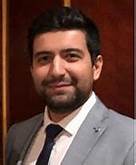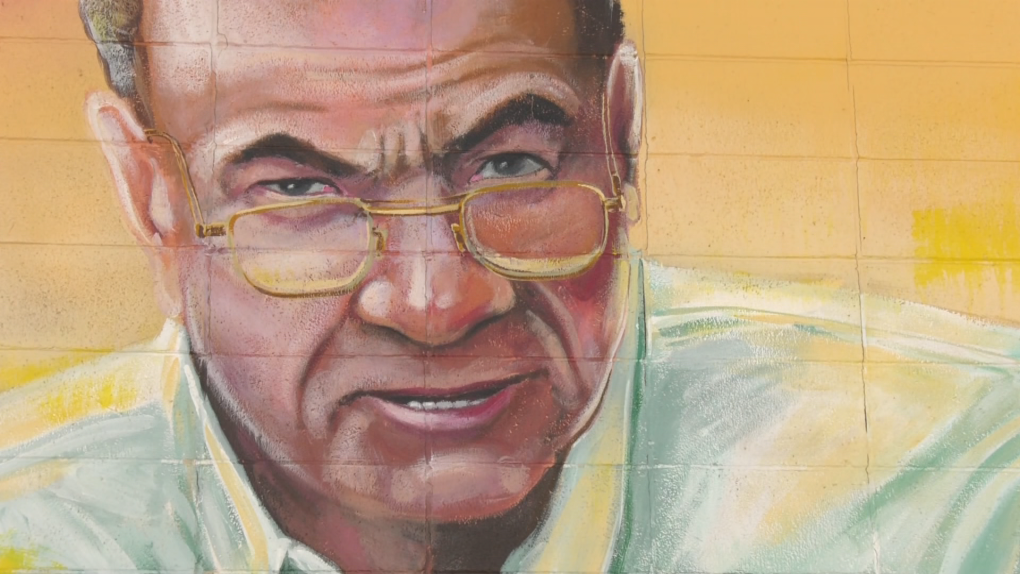Haitian migrant Gerson Solay, 28, holds his daughter, Bianca, as he and his family cross into Canada at the unofficial Roxham Road border crossing north of Champlain, NY, on Friday, March 24, 2023. New US-Canada migration agreement closes loopholes that allow migrants who enter Canada away from official border posts to stay in the country pending an asylum decision. (AP Photo/Hasan Jamali)
st. JOHNSBURY, Vermont (AP) – U.S. President Joe Biden and Canadian Prime Minister Justin Trudeau announced Friday plans to close loopholes in an immigration agreement that allows thousands of asylum-seeking immigrants to move between the two countries along a backroad connecting New York State to the Canadian province of Quebec.
So many migrants since early 2017 have entered Canada on Roxham Road outside Champlain, New York, that the Royal Canadian Mounted Police stationed staff at a reception center to process them, less than five miles (8 kilometers) from the official border crossing.
Mounties have warned migrants at the end of a narrow, two-lane road lined by forests and farm fields that they would be arrested if they crossed the border. But once on Canadian soil, they are allowed to stay and pursue asylum cases that can take years to resolve.
The new policy says that asylum seekers without US or Canadian citizenship caught within 14 days of crossing the 3,145-mile (5,061-kilometer) border will be sent back. That includes the people walking on Roxham Road.
The deal went into effect at 12:01 p.m. Saturday – swift implementation aimed at avoiding a surge in refugee complainants trying to cross, according to a Canadian official who spoke on condition of anonymity to discuss the deal beforehand.
Some of the last migrants to make it through before the Biden-Trudeau announcement were about eight people in two families—one from Haiti, the other from Afghanistan—who arrived at the US end of Roxham Road just after dawn on Friday. Both said they took a roundabout route to get there.
Gerson Solay, 28, brought his daughter Bianca to the border. He said he did not have the proper paperwork to remain in the United States. “That’s why Canada is my final destination,” he said before being detained for processing.
It’s not clear how Roxham Road became the favored route, but it’s just a taxi ride from where Interstate 87 approaches the Canadian border, and for migrants going south, it’s relatively close to New York City.
These migrants have taken advantage of a quirk in a 2002 agreement between the US and Canada that said asylum seekers must apply in the first country they arrive. Migrants who go to legal Canadian crossings are returned to the US and told to apply there. But those who reach Canadian soil at a place other than the port of entry—such as a center near Roxham Road—are allowed to stay and seek protection.
The deal was immediately criticized by some who felt it could jeopardize the safety of asylum seekers by preventing them from getting the support they need from both governments.
“We urge President Biden to reconsider this agreement and work with Congress to restore access to asylum and support policies that recognize the dignity of all people who arrive at our borders,” said Danilo Zak, associate director for policy and advocacy for the humanitarian group CWS, also known as Church World Services. The organization advocates for people around the world who have been forced from their homes.
The deal comes as the US Border Patrol responds to a sharp increase in illegal southern crossings along Canada’s wide-open border. Nearly everything takes place in northern New York and Vermont along the stretches of the border closest to Canada’s two largest cities, Toronto and Montreal.
While the numbers are still small compared to the US-Mexico border, they are happening more often now that the Border Patrol is staffing up the area and starting releasing some migrants to Vermont with upcoming dates to appear before immigration authorities.
As part of the deal, Canada also agreed to allow 15,000 migrants from the Western Hemisphere to seek asylum on humanitarian grounds year-round.
Meanwhile, migrants heading south have strained US border officials.
US Border Patrol agents stopped migrants illegally entering from Canada 628 times in February, more than five times the same period the previous year. Those numbers pale in comparison to migrants arriving from Mexico – where they were stopped more than 220,000 times in December alone – but it’s still a big change in percentage terms.
In the Border Patrol’s Swanton Sector, which stretches across New Hampshire, Vermont, and parts of upstate New York, agents stopped migrants 418 times in February, up more than 10 times the previous year. About half of those entering from Canada are Mexicans, who can fly visa-free to Canada from Mexico.
About an hour south of the border, the police chief at St. Johnsbury, Vermont, population 6,000, notified state officials that the Border Patrol had unloaded a van of immigrants with just minutes’ notice at a community welcome center. The same thing had happened several times before in the last few weeks.
In a statement, US Customs and Border Protection said the migrants being dropped off at St. Johnsbury had been arrested along the border after entering the US without a permit, and given notice to appear for further immigration processing.
They were dropped off at St. Johnsbury for having a station where migrants can catch buses to the larger city.
“In such circumstances, USBP works closely with the local community to ensure the safety of all parties – both community members and outsiders – and to ensure the stability of community resources,” the statement said.
But local officials said they had not been given time to prepare. State officials are now working to set up systems to provide migrants with the services they may need.
On Thursday, a Haitian couple and their children, a boy aged 17 and 9 and a girl aged 15, were escorted to the welcome center. The family, who did not want to be named, wanted to take a bus to Miami.
They said they had been in Canada for two months but would not talk about what prompted them to keep moving.
They missed Thursday’s bus which allowed them to connect to a bus to Boston, where they could catch another bus to Miami. A team of local volunteers spent the day feeding them, finding them a place to stay and arranging for them to catch a bus on Friday.
Police chief Tim Page said St. Johnsbury wants to help these migrants, but not quickly.
“We need to get something so we know what we’re going to do when this family arrives,” he says. “We don’t have a system in place yet, so when we do I’m sure it will all go more smoothly.”
___
Associated Press contributors include Rob Gillies in Ottawa, Ontario, and AP photographer Hasan Jamali of Roxham Road.

“Coffee enthusiast. Hipster-friendly social media fanatic. Certified zombie expert. Problem solver.”






